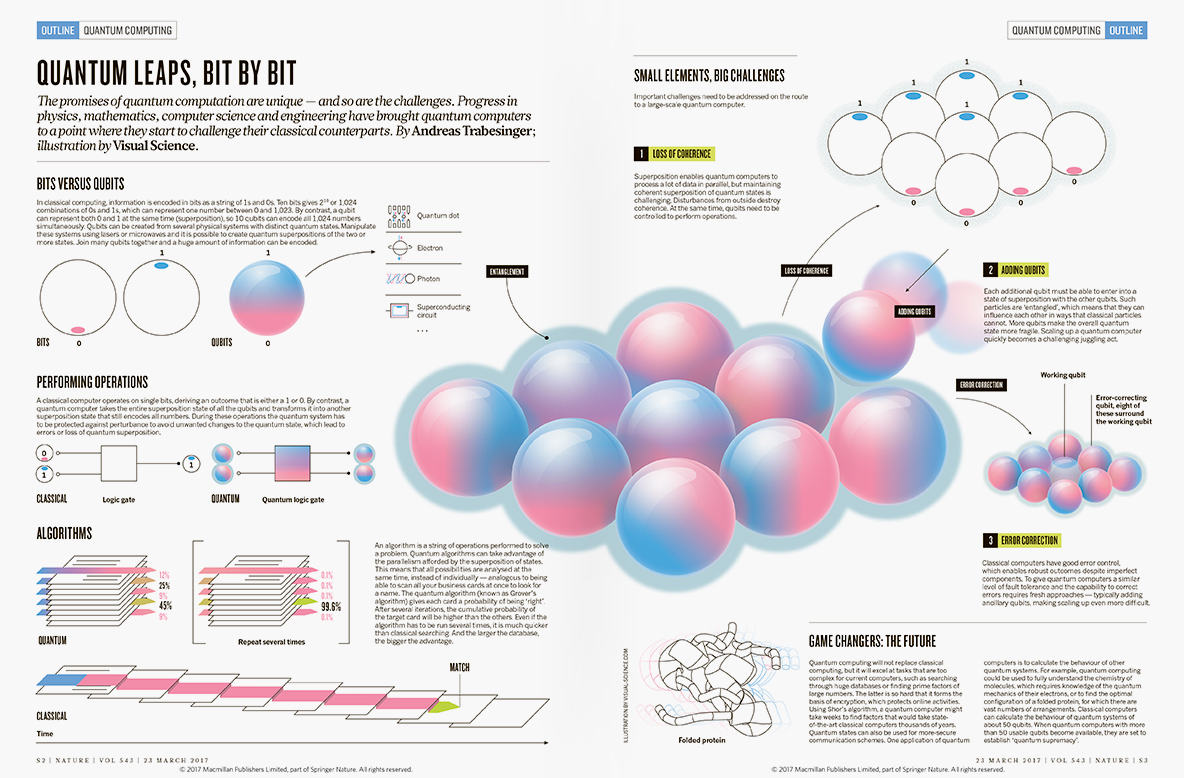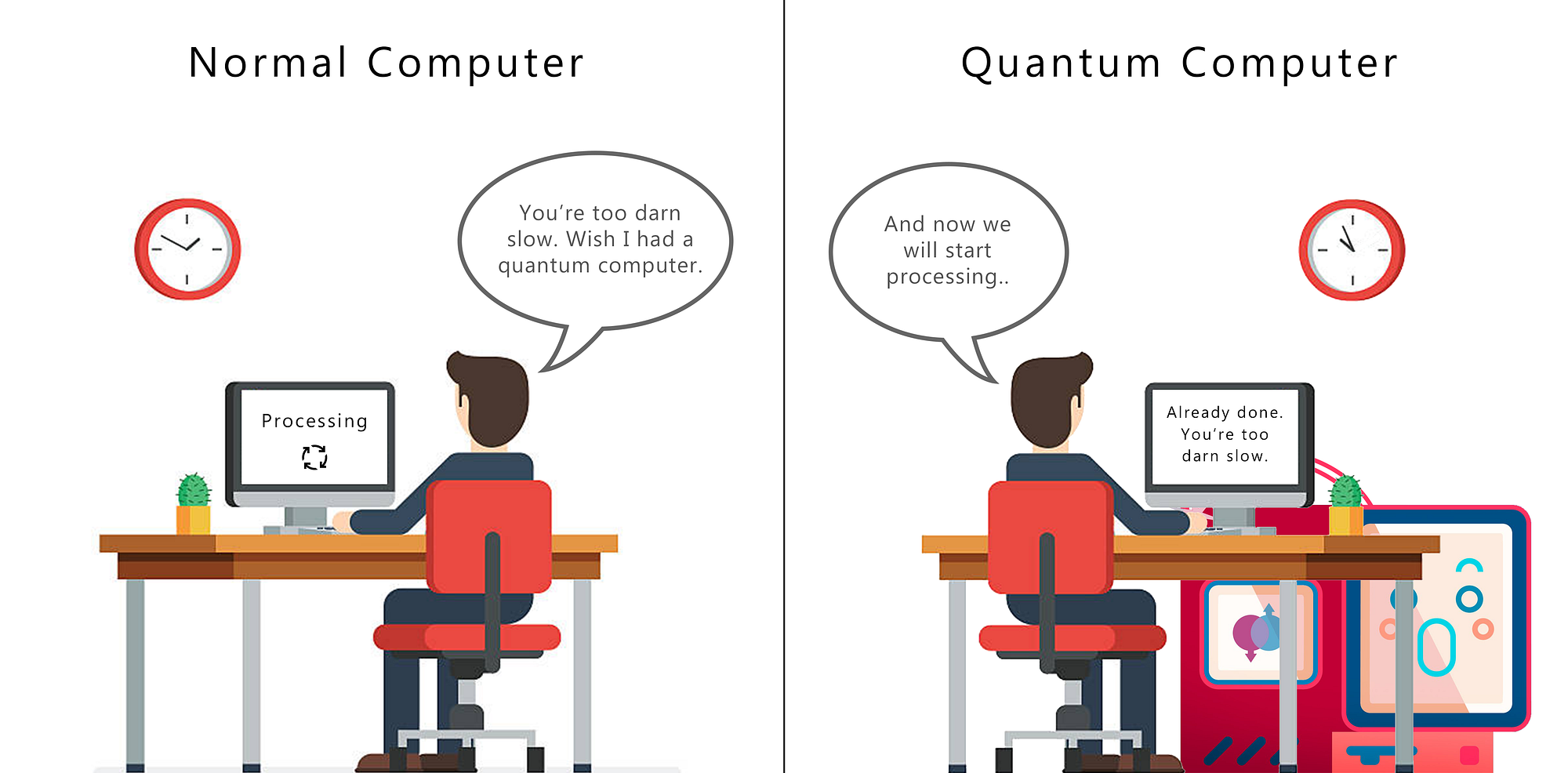Embark on a journey into the fascinating realm of quantum computing explained, where the boundaries of traditional computing are pushed to new frontiers. Dive into the intricate world of qubits, superposition, and quantum algorithms, as we unravel the mysteries behind this cutting-edge technology.
Explore the fundamental principles and applications of quantum computing in a way that is both enlightening and captivating.
Overview of Quantum Computing

Quantum computing is a cutting-edge field that utilizes the principles of quantum mechanics to perform computations. Unlike classical computing, which uses bits as the fundamental unit of information, quantum computing uses quantum bits or qubits. These qubits can exist in multiple states simultaneously, allowing for the processing of vast amounts of information in parallel.
Key Differences Between Quantum and Classical Computing
- Superposition: Qubits can exist in a state of superposition, representing multiple states at once, while classical bits can only be in a state of 0 or 1.
- Entanglement: Qubits can be entangled, where the state of one qubit is dependent on the state of another, enabling faster communication and computation.
- Quantum Interference: Quantum computers can exploit interference phenomena to perform complex calculations efficiently.
Significance of Quantum Computing
- Exponential Speedup: Quantum computing has the potential to solve certain problems exponentially faster than classical computers, revolutionizing fields such as cryptography, drug discovery, and optimization.
- Secure Communication: Quantum cryptography offers unbreakable encryption through quantum key distribution, ensuring secure communication channels.
- Machine Learning: Quantum algorithms can enhance machine learning processes by accelerating pattern recognition and optimization tasks.
Quantum Bits (Qubits) vs. Classical Bits
Quantum bits, or qubits, are the fundamental units of quantum information, analogous to classical bits in traditional computing. However, qubits differ significantly from classical bits in terms of their properties and capabilities.Qubits can exist in a state of superposition, meaning they can represent both 0 and 1 simultaneously, unlike classical bits that can only be in one state at a time.
This property allows qubits to process and store a vast amount of information in parallel, leading to exponential increases in computational power compared to classical bits.
Quantum Superposition and Entanglement
- Quantum superposition is the ability of a qubit to exist in multiple states at once, encompassing the possibilities of 0 and 1 simultaneously.
- Entanglement is another quantum phenomenon where qubits become correlated with each other, regardless of the distance between them, leading to interconnected quantum states.
- These quantum properties enable qubits to perform complex calculations and simulations efficiently by leveraging parallel processing and interconnectedness.
Quantum Superposition and Entanglement
Quantum superposition and entanglement are two fundamental principles in quantum computing that play a crucial role in enhancing the capabilities of qubits.Quantum superposition allows qubits to exist in multiple states simultaneously, unlike classical bits which can only be in one state at a time.
This means that a qubit can represent both 0 and 1 at the same time, opening up a vast number of possibilities for parallel computation.
Quantum Superposition
Quantum superposition is the ability of a qubit to be in a combination of states at once, thanks to the principles of quantum mechanics. This unique property enables quantum computers to perform complex calculations much faster than classical computers by exploring multiple solutions simultaneously.
- One of the key advantages of quantum superposition is its potential to exponentially increase the processing power of quantum computers when compared to classical computers.
- By leveraging superposition, quantum algorithms can efficiently solve certain problems that would be infeasible for classical computers due to their ability to explore multiple solutions simultaneously.
- Quantum superposition is a cornerstone of quantum computing, allowing for the creation of powerful algorithms such as Shor's algorithm for factorization and Grover's algorithm for searching databases.
Quantum Entanglement
Entanglement is another fundamental concept in quantum computing that describes the strong correlations that can exist between qubits, even when they are separated by large distances. When two qubits become entangled, the state of one qubit instantly influences the state of the other, regardless of the physical distance between them.
Entanglement is a unique phenomenon in quantum mechanics where the properties of particles become interconnected in such a way that the state of one particle is directly linked to the state of another, regardless of the distance between them.
- Entanglement plays a crucial role in quantum computing by enabling the creation of quantum gates that can manipulate qubits in a highly correlated manner, leading to more efficient computation.
- By harnessing entanglement, quantum computers can perform complex operations in parallel, significantly speeding up computation and enabling the development of advanced quantum algorithms.
- Entanglement is essential for achieving quantum supremacy, where quantum computers can outperform classical computers in certain tasks, showcasing the power of quantum entanglement in enhancing computational capabilities.
Quantum Gates and Algorithms

Quantum gates are fundamental building blocks in quantum circuits, allowing manipulation of qubits to perform quantum operations. Quantum algorithms, on the other hand, are specialized algorithms designed to run on quantum computers, taking advantage of quantum properties to solve complex problems efficiently.
Types of Quantum Gates
- Hadamarad Gate: A key quantum gate that creates superposition by transforming a qubit from the 0 state to a combination of 0 and 1 states.
- CNOT Gate: Also known as the Controlled-NOT gate, it performs an XOR operation on two qubits, entangling them.
- Phase Gate: Introduces a phase shift in the qubit state, enabling complex interference patterns.
Popular Quantum Algorithms
- Grover's Algorithm: A quantum search algorithm that can search an unsorted database faster than classical algorithms, providing a quadratic speedup.
- Shor's Algorithm: An algorithm for integer factorization that can break RSA encryption efficiently, showcasing the potential of quantum computers in cryptography.
Quantum gates and algorithms leverage quantum principles like superposition and entanglement to perform computations exponentially faster than classical computers for certain problems.
Quantum Error Correction

Error correction in quantum computing poses significant challenges due to the fragile nature of quantum information. Quantum states are easily disrupted by noise and decoherence, making errors more common than in classical computing systems.
Methods for Error Correction
Error correction in quantum systems involves the use of quantum error correction codes, such as the surface code or the Shor code. These codes introduce redundancies in the quantum information to detect and correct errors without directly measuring the quantum state, as measurement can collapse the superposition.
- Surface Code: The surface code is a widely used quantum error correction code that encodes qubits on a two-dimensional lattice. By measuring the parity of qubits in a plaquette, errors can be detected and corrected.
- Shor Code: The Shor code is a more sophisticated error correction code that can correct both bit-flip and phase-flip errors. It utilizes entangled states to protect quantum information from errors.
Importance for Scalability and Reliability
Quantum error correction is crucial for the scalability and reliability of quantum computers. Without error correction, quantum systems would be too error-prone to perform complex computations or run algorithms for extended periods. By implementing error correction codes, quantum computers can mitigate errors and achieve the necessary stability for practical applications.
Epilogue
In conclusion, quantum computing represents a revolutionary paradigm shift in the world of technology, offering immense potential for solving complex problems at unprecedented speeds. As we continue to delve deeper into the quantum realm, the possibilities are truly limitless.
Question Bank
What makes quantum computing different from classical computing?
Quantum computing utilizes qubits that can exist in multiple states simultaneously, allowing for complex calculations that classical bits cannot perform.
How does quantum error correction impact the scalability of quantum computers?
Quantum error correction is crucial for ensuring the reliability and scalability of quantum computers by minimizing errors that can arise from quantum phenomena.
What are some popular quantum algorithms used in quantum computing?
Popular quantum algorithms include Grover's algorithm for searching databases and Shor's algorithm for integer factorization, showcasing the immense power of quantum computation.
